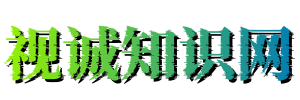Understanding the Dot in Encyclopedia Style: Common Queries and Answers

Welcome to our comprehensive guide on understanding the dot commonly used in encyclopedia-style content. Below, we have compiled a list of frequently asked questions along with detailed answers to help you navigate through this unique format.
What does the dot represent in encyclopedia-style content?
Encyclopedia-style content often employs the use of dots to denote various elements such as headings, subheadings, and bullet points. Here's a breakdown of what each dot typically signifies:
- Single dot: Represents a subheading within a section, indicating a more detailed topic within the broader category.
- Two dots: Signifies a sub-subheading, further breaking down the content into more specific subtopics.
- Three dots: Indicates a bullet point, often used to list items or present a series of related concepts.
- Four dots: Represents a deeper level of detail, often used in complex articles or encyclopedias to delve into intricate subjects.
Why is the dot format used in encyclopedias?
The dot format is widely used in encyclopedias due to its ability to organize and present information in a structured and easily navigable manner. Here are some key reasons for its popularity:
- Clarity: The dot format helps to clearly distinguish between different levels of information, making it easier for readers to understand the structure and hierarchy of the content.
- Navigation: By using dots, readers can quickly locate specific sections or subtopics without having to search through the entire article.
- Readability: The use of dots improves the overall readability of the content by breaking it down into manageable chunks.
- Accessibility: The dot format is particularly beneficial for individuals with visual impairments, as it provides a clear and structured layout that can be easily followed.
By understanding the significance of the dot in encyclopedia-style content, readers can better navigate and comprehend the wealth of information presented.

.png)
.png)
.png)
